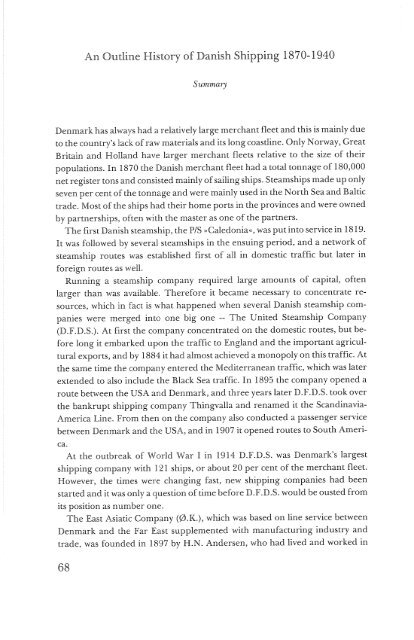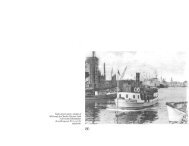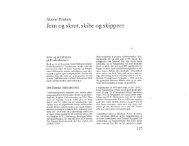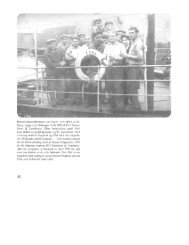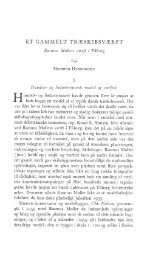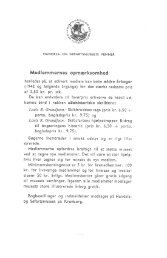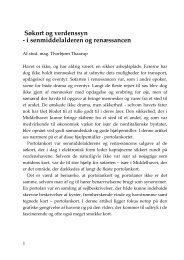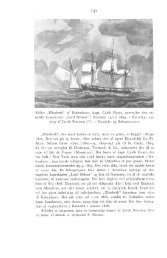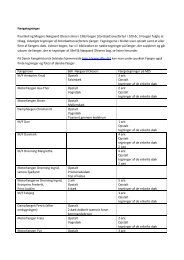Dansk skibsfart 1870-1940, s. 31-70
Dansk skibsfart 1870-1940, s. 31-70
Dansk skibsfart 1870-1940, s. 31-70
You also want an ePaper? Increase the reach of your titles
YUMPU automatically turns print PDFs into web optimized ePapers that Google loves.
An Outline History of Danish Shipping <strong>18<strong>70</strong></strong>-<strong>1940</strong><br />
Summary<br />
Denmark has always had a relatively large merchant fleet and this is mainly due<br />
to the country's lack of raw materials and Its long coastline. Only Norway, Great<br />
Britain and Holland have larger merchant fleets relative to the size of their<br />
populations. In <strong>18<strong>70</strong></strong> the Danish merchant fleet had a total tonnage of 180,000<br />
net register tons and consisted mainly of sailing ships. Steamships made up only<br />
seven per cent ofthe tonnage and were mainly used in the North Sea and Baltic<br />
tråde. Most ofthe ships had their home ports In the provinces and were owned<br />
by partnerships, often with the master as one of the partners.<br />
The first Danish steamship, the P/S »Caledonia«, was put into service in 1819.<br />
It was followed by several steamships in the ensuing period, and a network of<br />
steamship routes was established first of all in domestic traffic but later in<br />
foreign routes as well.<br />
Running a steamship company required large amounts of capital, often<br />
larger than was available. Therefore it became necessary to concentrate re-<br />
sources, which in faet is what happened when several Danish steamship com<br />
panies were merged into one big one — The United Steamship Company<br />
(D.F.D.S.). At first the company concentrated on the domestic routes, but be<br />
fore long it embarked upon the traffic to England and the Important agricul<br />
tural exports, and by 1884 it had almost achieved a monopoly on this traffic. At<br />
the same time the company entered the Mediterranean traffic, which was later<br />
extended to also include the Black Sea traffic. In 1895 the company opened a<br />
route between the USA and Denmark, and three years later D.F.D.S. took over<br />
the bankrupt shipping company Thingvalla and renamed it the Scandinavia-<br />
America Line. From then on the company also conducted a passenger service<br />
between Denmark and the USA, and in 1907 it opened routes to South Ameri<br />
ca.<br />
At the outbreak of World War I in 1914 D.F.D.S. was Denmark's largest<br />
shipping company with 121 ships, or about 20 per cent ofthe merchant fleet.<br />
However, the times were changing fast, new shipping companies had been<br />
started and it was only a question of time before D.F.D.S. would be ousted from<br />
its position as number one.<br />
The East Asiatic Company (Ø.K.), which was based on line service between<br />
Denmark and the Far East supplemented with manufacturing industry and<br />
tråde, was founded in 1897 by H.N. Andersen, who had lived and worked in<br />
68


